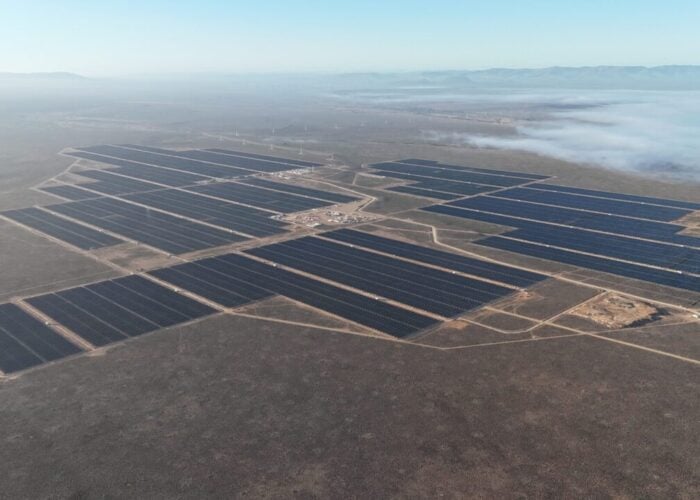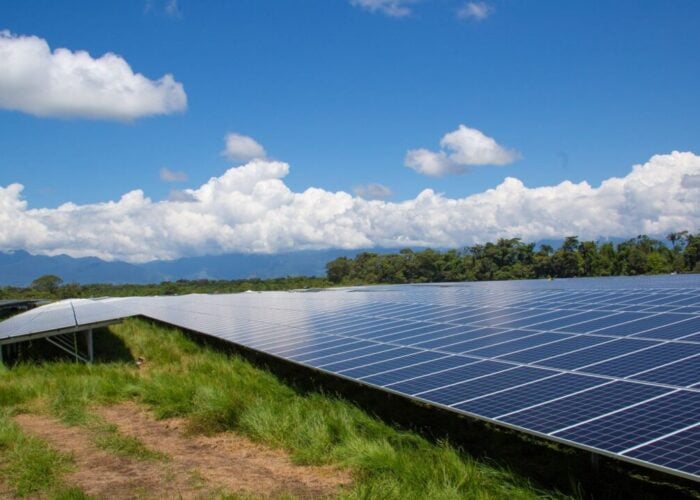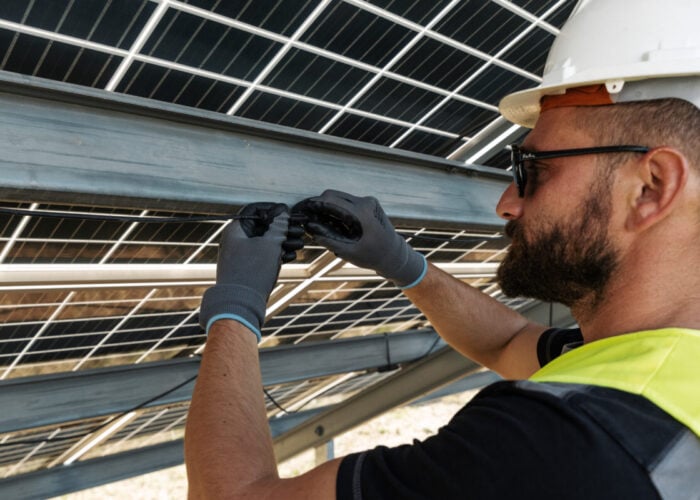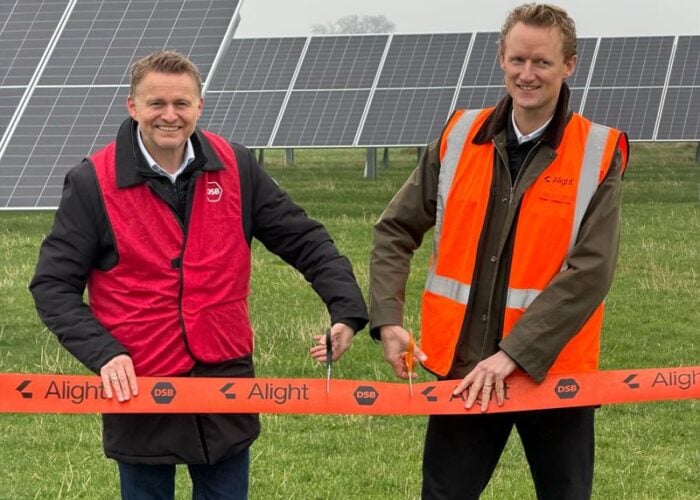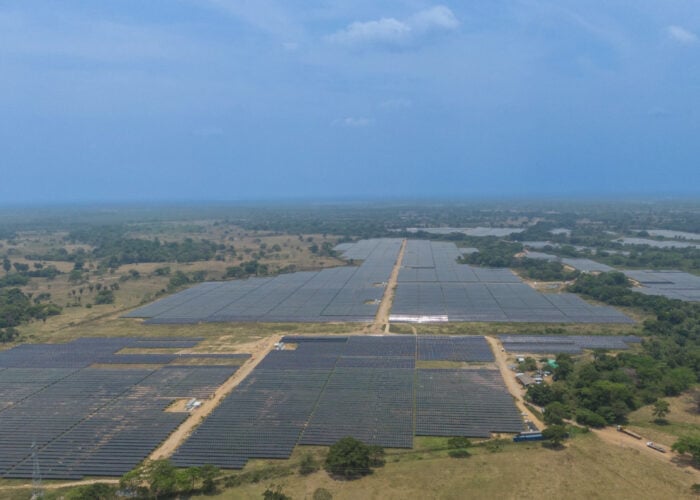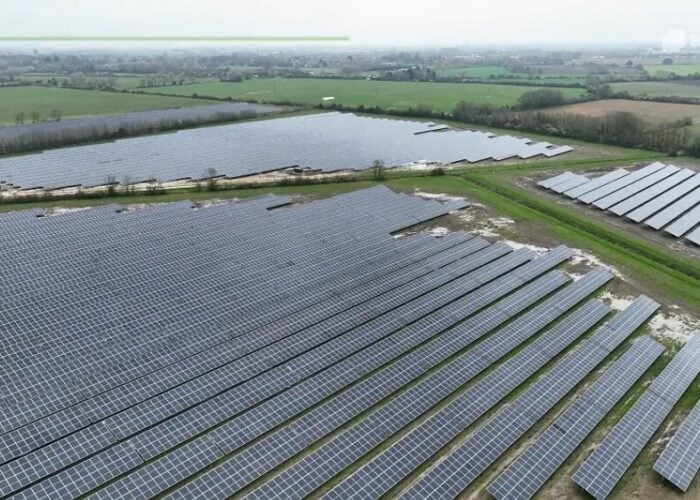Lamination is a key step in module manufacturing, and the quality control of the lamination process affects the degree of EVA cross-linking, which in turn affects module durability. Prior tests for EVA cross-linking were time-consuming and destructive. A new technology to measure EVA cross-link level in situ is now entering the market. The technology not only enables 100% lamination process quality control, but can also generate cross-link level maps or “fingerprints” with fine spatial resolution. These fingerprints seem to be unique to each lamination process. Thus, the lamination process can now be monitored and even tuned to an unprecedented degree, with precision and speed.
Module durability depends strongly on module design, materials and component selection. However, effective quality control (QC) during manufacturing makes a crucial difference in module durability, regardless of design and materials. Thus, in the race to reduce costs and maintain or improve module performance, QC metrology in module manufacturing is an important contributor.
Try Premium for just $1
- Full premium access for the first month at only $1
- Converts to an annual rate after 30 days unless cancelled
- Cancel anytime during the trial period
Premium Benefits
- Expert industry analysis and interviews
- Digital access to PV Tech Power journal
- Exclusive event discounts
Or get the full Premium subscription right away
Or continue reading this article for free
While much effort is being made in using various imaging techniques (electroluminescence, IR thermography, photoluminescence, quantum efficiency mapping) to assess cell quality and interconnection in module assembly, less effort is made to develop tools to assess the quality of the encapsulation during manufacture including during lamination. In the lamination process, a stack consisting of front-glass, encapsulant layer, interconnected cell strings, second encapsulant layer and back-sheet are fused together under temperature and pressure. Among encapsulants, EVA remains the incumbent and is expected to remain so for many years (Figure 1).
During the lamination process, EVA cures to develop the required stiffness and adhesion. Insufficient cure can result in delamination, yellowing, and void formation. The standard EVA “fast-cure” formulation requires a lamination time of 12-15 minutes. Cost considerations seek a shorter lamination process cycle. Thus, the lamination process balances quality and speed.
Typically, the gel fraction test provides QC feedback for the EVA cure (cross-link) level. This test is based on extracting the soluble (non-cross-linked) fraction of a sample of the cured EVA. The “gel-fraction” is the weight fraction of material remaining after solvent extraction. The test has several drawbacks. It is manual, destructive, time-consuming (requiring 24 hours or more) and hazardous (solvents are toxic and flammable). Moreover, without a carefully developed and controlled test procedure, results can be highly variable. The net result is that manufacturers sample at a very low rate (one in several thousand modules) to assess EVA cross-link level. In short, the current QC method to assess EVA cure level in production is limited.
With these known drawbacks, the research community evaluated potential replacements. Many methods can measure EVA cross-linking, and a recent review lists 11. However, the review indicates that only one of these methods is likely to be used for in-line QC. A team in Austria (the Carinthian Tech Research and the Austrian Research Institute for Chemistry and Technology) is investigating the use of confocal Raman spectroscopy as a non-contact, non-destructive method. The Raman method relies on the change in the relative intensities of the –CH2- versus CH3 groups as a function of EVA cross-linking. Note that since Raman is an optical method, it can only be applied through the front-glass.
The Fraunhofer Center for Sustainable Energy CSE developed a simple method sensitive to the change in the time dependent (viscoelastic) response to deformation of the EVA as it cross-links. The test consists of indenting a probe into the back of the module and measuring the force as a function of time. The decay in the force depends strongly on the degree of cross-linking of the EVA underneath the back-sheet. Weakly cross-linked EVA has a steep force decay curve whereas strongly cross-linked EVA has a shallow one. The amount of force decay can be correlated with the gel fraction (Figure 2). Note that the response of the indentation method is sensitive over a wider range of lamination time than the Gel Fraction Test.
The indentation method is non-destructive, fast, repeatable and simple. The method was licensed from Fraunhofer CSE by LayTec GmbH and commercialised under the name XLINK. LayTec’s stand-alone lab unit (Figure 3) can be used to measure the cross-link level as a function of position thereby creating a map of the degree of cure (Figures 4-6). These maps have led to some unexpected insights in a set of commercial modules.
Figure 4 shows a localised region of low cure. Discussion with the module manufacturer identified the failure of a heating element in the laminator that occurred during this batch of modules. Such a failure would surely have been detected during routine maintenance, but how many incompletely laminated modules would have manufactured in the mean time?
Figure 5 shows an asymmetric curing profile in which the top right corner shows a lower level of cure and the lower left a higher level. This pattern is characteristic of a 2×2 module arrangement in a large production laminator. In this case, the centre region of the laminator cures the centre corners of the 2×2 array to a greater extent than the outer corners. To achieve a more uniform cure level it would be necessary to “tune” the laminator to deliver a more uniform heat distribution.
As a final example, Figure 6 shows a symmetric cure distribution in which the center of the module has a higher cure level than the edges. This pattern is characteristic of a laminate that “bowed” during lamination. Bowing is the result of rapid heating in the centre resulting in a localised thermal expansion of the glass. The result is that the edges of the laminate bow upwards, reducing thermal contact at the edges and further increasing the non-uniform heating. Lift pins in the laminator have been introduced to provide for a more gradual initial heating, reducing the bowing phenomenon.
In its on-line configuration (Figure 7) module manufacturers can now ensure that EVA meets the cure target for every module manufactured. Cure maps, measured off-line, can be used to evaluate the uniformity of cure and as feedback to tune laminator performance.
The best QC methods are fast, in-line, non-destructive, cheap and repeatable. With the introduction of LayTec’s XLINK, 100% monitoring of the lamination process is possible. In addition, the tool enables faster process development, faster assessment of new lots of EVA, and QC data for customers and certifiers. The off-line tool can be used to map the cross-link level, which enables adjustment or tuning of the laminator for optimum performance.
Industry interest in the technology is growing. Several major module manufacturers, including REC and Hanwha Q CELLs, are adopting the technology. As module manufacturers become familiar with the technology and the tool, a wide adoption is expected.
Although the basic design of solar modules remains unchanged appreciably in many years, a large number of innovations in cell and module design are simultaneously reducing cost, increasing efficiency, and reliability. Innovations in manufacturing metrology enable module quality, contributing to a reduced levelised cost of electricity via improved durability.

